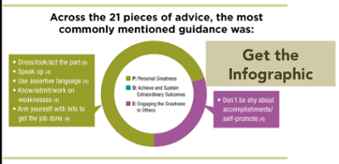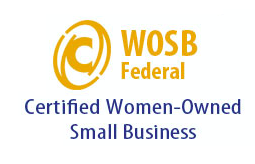%2c%20member%20of%20a%20locally%20aggressive%20population%2c%20forages%20in%20a%20domestic%20garden%20by%20a%20street%20in%20Port%20Townsend%2c%20Washington%2c%20USA.jpeg?width=600&name=Columbian%20black-tailed%20deer%20(binomial%20name%20Odocoileus%20hemionus%20columbianus)%2c%20member%20of%20a%20locally%20aggressive%20population%2c%20forages%20in%20a%20domestic%20garden%20by%20a%20street%20in%20Port%20Townsend%2c%20Washington%2c%20USA.jpeg)
A while ago, as I worked in my home office, a small herd of young deer came over the stone walls. Two entered the yard. A nibble from the ground here, a nibble from the ground there. Delicate steps, ear-twisting listening, noses seeking the scent of danger. Zip, gone a few tips of lily leaves, a few hydrangea leaves, a few rose leaves.
After they left, there was no sign that they had been here. No bare spot of grass, no absent frond of lily leaves, no stripped branch of hydrangea or rose. I was struck by how carefully they steward the land from which they take their sustenance - a lesson I try to live daily as I seek to simplify the material part of life.
And then, struck by the invisibility of their presence, I thought of this quote about leadership from Lao Tzu, the father of Taoism.
“As for the best leaders, the people do not notice their existence…
The second best leaders, people honour and praise…
The next best leaders, people fear…
The next, people hate…
When the best leaders’ work is done the people say, ‘we did it ourselves.’”
Lao-Tzu
This truth about leadership, codified at least 2300 years ago, tends to serve women well…sometimes!
Humility
Many of us are extraordinary leaders by Lao Tzu’s definition and the accolades of our direct reports. We are empowering of others. We don’t take credit that is not our due. We generously share credit with our team. This tends to not be a conscious strategic choice. The fact is, most women don’t like to boast and don’t like to stand out. We have a tendency to humility.
This humility is part of the success equation that Jim Collins describes as characterizing the executives who took their companies from good to great. Collins writes, “The essential ingredient for taking a company to greatness is having...an executive in whom extreme personal humilityblends paradoxically with intense professional will.”
The sad fact of the matter is that the people who determine our options for upward mobility aren’t our direct-reports. They are our bosses – and with rare exception they tend to hold as the model for leadership one of the “heroic leader” paradigm. In my research I have identified 3 common heroic leader paradigms:
The General Patton paradigm recognizes and favors the command and control type of leader. You recognize the General Patton leader, not only be their tendency toward command and control style of leadership, but also by the reasons they give for not promoting women into senior positions. Most commonly, “She won’t make the tough decisions.”
The Moses-from-the-Mountain paradigm recognizes and favors the charismatic visionary. Organizations that seek this type of leader is often criticized for promoting people who “look the part” over people who “get it done”. They don’t promote women into senior positions because she doesn’t “fit the bill” or “won’t play” with the money managers, large accounts or someone else.
The Lone Ranger paradigm recognizes and favors those who come to the rescue with quick action. The executives who slash and burn, reorganize, or take other dramatic actions. Their favorite rationale for not promoting a woman would be, “she’s too deliberate, can’t act quickly enough”.
As you might expect, none of these models of leadership include humility as a competence! So, what’s a woman to do?
She is to think about humility as a strategic choice, not a permanent personality trait. Be humble down, be boastful up. Take credit where credit is due when talking with those who make decisions about your career. Be generous in giving credit where credit is due when talking with your direct reports. AND do both when advocating for the advancement of a protégé (someone you’re mentoring). In other words, know how to strategically self-promote.
Strategic Self-Promotion
What does strategic self-promotion look like? Let’s say you’ve just closed a key deal. To make it happen, Sam (a direct report) did a great deal of research about the client company. You were able to use the research to tailor a pitch and to succeed in a lengthy negotiation. The net result? A sale that will mean $1million to your company’s bottom line.
Now you have a chance to talk to Chris, the CEO at an upcoming event. If your tendency would normally be to say nothing OR to say something like, “I want you to know what a great job the team did in landing the XYZ account”, zip it! Instead, plan to make a strategic boast.
Strategic self-promotioin requires 3 steps:
- First, take a shot at what leadership paradigm the CEO holds.
- Second, determine how to weave the biases of that paradigm into a “boast”.
- Third, make the boast!
A strategic self-promotion to a General Patton paradigm-holder:
Chris, I want to let you know that I successfully completed the VERY difficult negotiation with XYZ company. They really tried to push us around, but I drove home a deal that will bring $1 million to the bottom line.
Notice the emphasis on your strength in handling a difficult negotiation, in being able to stand up to the push from XYZ and to “drive home” the deal.
To the Moses-from-the-Mount paradigm-holder:
Chris, I want to tell you personally that I was able to win XYZ company over to our side during the negotiations. The $1 million profit from the deal will move us closer to the <insert something about the vision>.
Notice the personal message, the compelling win over to your side and the tie to the vision.
To the Lone Ranger paradigm-holder:
Chris, it was a great move to go after XYZ when we did. They were just realizing that they needed <what we sold them> and I made the deal before anyone else got to them. The $1million could have gone to <competitor> if I hadn’t begun negotiations when I did.
Take note of the fact that you struck while the fire was hot and saved the company from the competitive threat!
If you’re like Madeleine Albright and you think it’s a “crime” to not share credit, you’ll want to advocate for Sam’s future. The best way to do this is to a great plug for Sam’s excellent research into any of the above boasts. BUT do NOT leave the remark about Sam as the final comment. The opening and final comments should be about the work YOU did.
Being inclined to humility, these examples of strategic self-promotion might feel alien to you. I long for the day when all organizations recognize the many and complex truths about leadership and understand the power in humility. Until they do, salt your skill set with strategic self-promotion.









